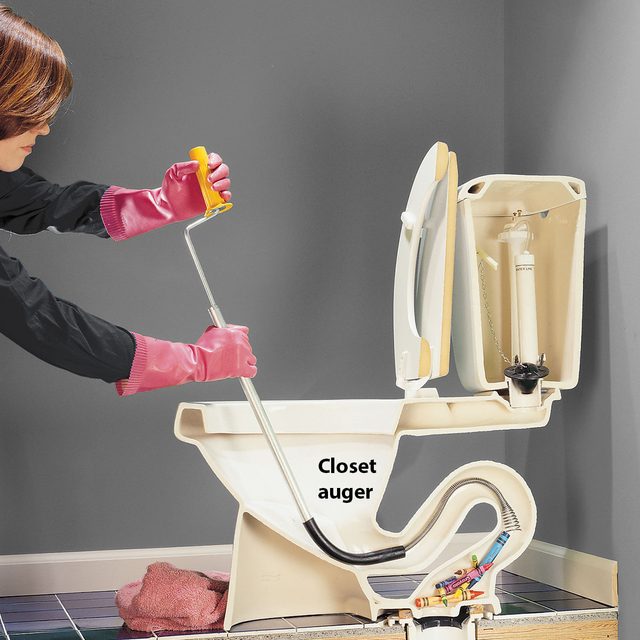Does the unsightly presence of scratches mar the pristine surface of your toilet, casting an unflattering shadow over its otherwise spotless appearance? Fret not, for this comprehensive guide will equip you with the knowledge and techniques to banish these blemishes, restoring your porcelain throne to its former glory.

Image: www.youtube.com
Scratches, those imperfections that mar the smooth surface of your precious toilet, are more than just aesthetic nuisances. They can provide a sanctuary for bacteria and germs, compromising hygiene and potentially posing health risks. Moreover, they can diminish the value of your bathroom and make it an undesirable space. Therefore, it is imperative to address these scratches promptly and effectively.
Unveiling the Causes of Toilet Scratches: A Quest for Prevention
Before delving into the art of scratch removal, let us explore the culprits responsible for these unsightly blemishes. Identifying these causes will empower you to take preventive measures, safeguarding your toilet from future scratches.
-
Abrasive Cleansers: These harsh chemical concoctions, often employed to combat stubborn stains, can inadvertently inflict microscopic scratches on the toilet’s surface. Always opt for milder, non-abrasive cleaners to maintain your toilet’s pristine condition.
-
Metal Brushes: The sturdy bristles of metal brushes, while effective in removing stubborn grime, can leave behind unsightly scratches. Consider using softer brushes, such as those made from plastic or natural fibers, to prevent this damage.
-
Sharp Objects: Carelessly dropping sharp objects, such as razors or nail clippers, into the toilet bowl can result in scratches. Be cautious when handling these objects near your toilet to avoid accidental damage.
The Art of Scratch Removal: Restoring Your Toilet’s Beauty
Now that the instigators of toilet scratches have been unveiled, let us embark on the restorative process of removing these blemishes, returning your porcelain throne to its former glory.
Method 1: Toothpaste’s Surprising Scratch-Removing Power
Harnessing the gentle abrasiveness of toothpaste, this method offers a simple and effective solution for minor scratches. Apply a small amount of white, non-gel toothpaste to the scratched area and gently rub using a soft cloth or cotton ball. Rinse thoroughly with water to reveal a refreshed surface.

Image: www.familyhandyman.com
Method 2: Baking Soda’s Multifaceted Scratch-Fighting Abilities
Baking soda, a household staple renowned for its myriad uses, also shines in the realm of scratch removal. Create a paste by mixing baking soda with a small amount of water. Apply this paste to the scratches and allow it to rest for several hours or overnight. Scrub gently with a damp cloth and rinse well.
Method 3: Vinegar’s Acidic Approach to Scratch Removal
Vinegar, with its mild acidity, can gently dissolve and remove scratch marks. Apply pure white vinegar to the scratches using a cloth or cotton ball. Leave it on for a few hours, then scrub with a damp cloth and rinse thoroughly.
Method 4: Commercial Scratch Repair Kits for Specialized Solutions
For more stubborn scratches that resist home remedies, commercial scratch repair kits offer a specialized solution. These kits typically include a fine-grit abrasive compound and a polishing agent. Carefully follow the instructions provided with the kit to achieve optimal results.
How To Fix A Scratched Toilet
Preventive Measures: Shielding Your Toilet from Future Scratches
Having restored your toilet to its former glory, it is essential to implement preventive measures to safeguard it from future scratches, ensuring its continued pristine appearance.
-
Regular Cleaning: Regular cleaning with non-abrasive cleaners helps prevent the accumulation of dirt and grime, reducing the likelihood of scratches.
-
Soft Brushes: Opt for soft brushes made of plastic or natural fibers to clean the toilet bowl and avoid metal brushes that can scratch the surface.
-
Cautious Handling: Handle sharp objects with care near the toilet to prevent accidental drops that could lead to scratches.
-
Protective Coatings: Consider applying a protective coating to the toilet’s surface. These coatings can help prevent scratches and make it easier to clean.
Embracing these preventive